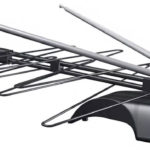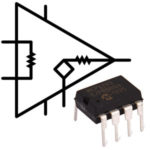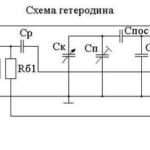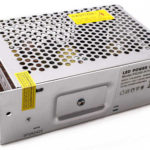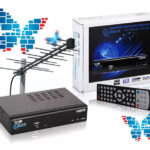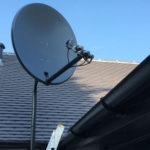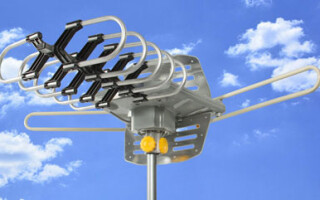We can’t imagine our lives without our favorite TV shows and movies for a long time. Therefore, the TV in the apartment of a modern person is the main gadget. To access television outside the city (for example, in the country), a satellite dish is required. This device is designed to view a wide range of TV channels in digital and HD quality. There are also conventional television antennas that receive and broadcast over-the-air digital TV. However, sometimes the signal strength is not enough and the image on the TV screen is broadcast with noise.
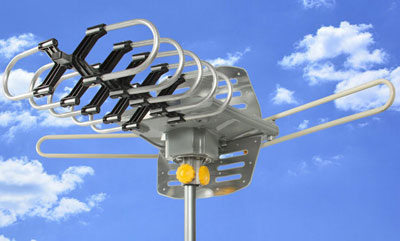
Content
- 1 What factors affect the deterioration of the television signal
- 2 What is an antenna amplifier?
- 3 Classification of TV amplifiers
- 4 Models for analog signal amplification
- 5 Models for amplifying terrestrial and satellite signals
- 6 How to strengthen an indoor antenna
- 7 How to choose an antenna amplifier
- 8 Connecting the amplifier to the antenna
- 9 Advantages and disadvantages of antenna amplifiers
- 10 Overview of popular models
What factors affect the deterioration of the television signal
The reasons for interference in the broadcast can be different. The most common of them:
- the distance of the TV from the repeater;
- unsuitable TV antenna;
- a large amount of noise in the radius of the antenna;
- physical obstacles to signal transmission (high-rise buildings, trees, industrial buildings);
- non-working condition of the cable;
- incorrect orientation of the transmitter;
- metal structures near the antenna;
- signal distribution to several receivers;
- outdated technology.
What is an antenna amplifier?
Antenna amplifiers are devices that amplify the quality of a television or radio signal, as well as reduce all kinds of interference. They increase the range of the signal, bringing the broadcast "picture" to the maximum quality. Amplifiers are necessary for residents of both suburbs and megacities: for example, when a television tower is located at a distance or there are many high-rise buildings around the house that create obstacles.
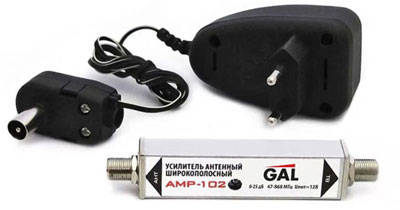
REFERENCE: Due to the shape and design of the antenna, it more clearly receives a clearer signal from one, maximum - two directions.
Classification of TV amplifiers
Amplifiers are divided into types:
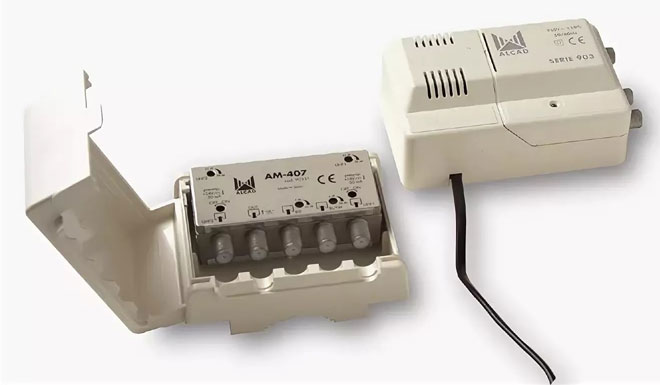
- Mast. Those that are attached to the mast itself. By coaxial cable food is provided to them. But that is why such amplifiers do not last long, they can go out of service during a thunderstorm and lose quality due to oxidation of the contacts. Mast amplifiers usually work for a couple of years.
- Internal. These are more convenient because they are next to the receiver. True, signal losses still occur through the cable.
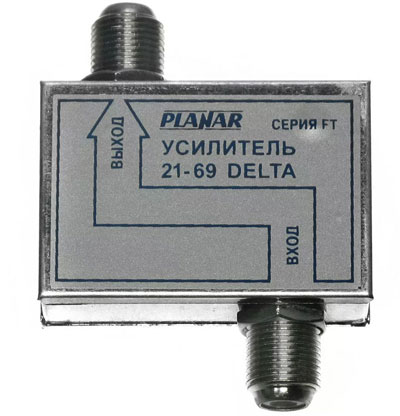
Antenna amplifiers are also divided into subtypes:
- Range. SWA and LSA devices that are required when installing array antennas.
- Multiband. Devices such as ALCAD and TERRA, which work for near and far reception.They are able to perceive several signals simultaneously from different sources and add them into one.
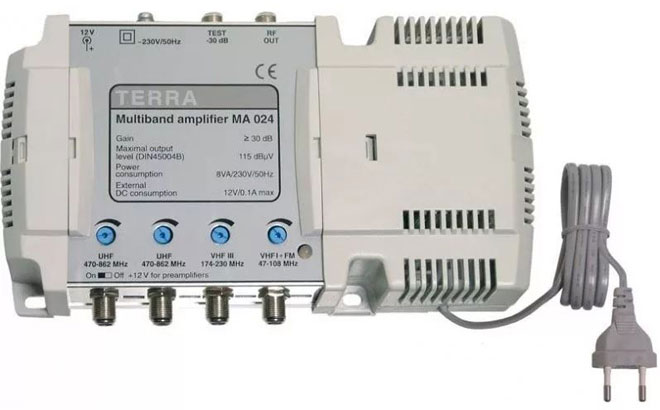
In addition, all antenna amplifiers come with their own power supply. They are also different: adjustable and unregulated with external or internal design.
Models for analog signal amplification
Modern radio technology devices can solve the problem of low-quality "pictures" on the screen of your TV. Such devices have many advantages and allow you to eliminate interference with your own hands. It is important to make the right choice when combining antenna and amplifier performance.
- Televes 5523.
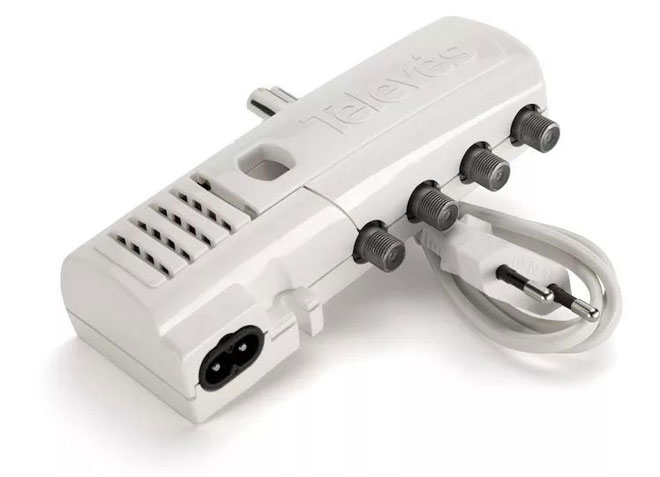
A manufacturer from Italy that provides amplifiers with five outputs. In addition, it has a sufficiently large amplifier coefficient - 16 dB, which significantly reduces noise and interference. The device operates through a separate power supply.
- Terra HA123.
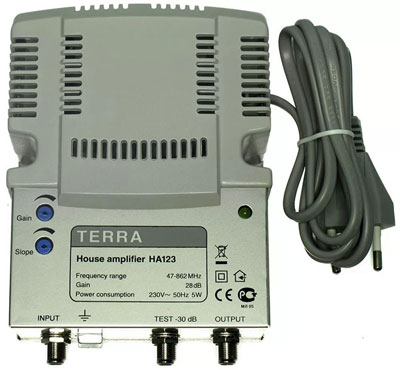
This model is great for cottages or high-rise buildings, as it increases the signal by a factor of 28 dB and works at different frequencies.
Models for amplifying terrestrial and satellite signals
- Gecen A05-20.
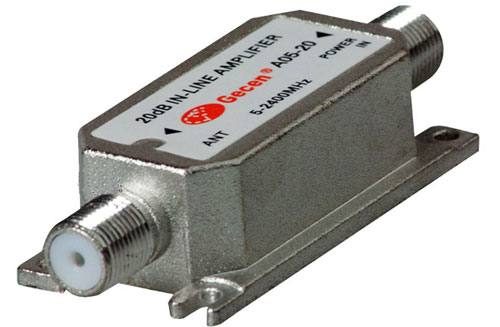
Such an amplifier raises the signal coefficient to 19-21 dB. It operates in the frequency range for satellite broadcasting 950-2400 MHz, terrestrial - 5-950 MHz. However, for greater effect, you may need a separate power supply.
- Polish amplifiers of the SWA series.
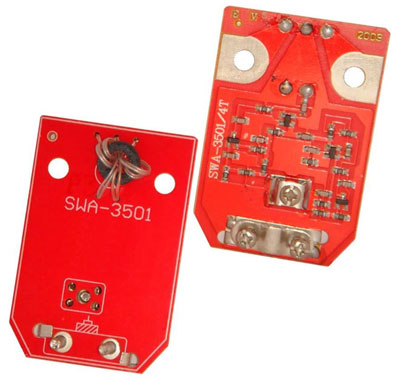
These models are mounted on "grid" antennas and amplify the signal frequency in the range from 49 to 790 MHz.
They are installed mainly on the "grids" of antennas and have different gain factors. The frequency range varies from 49 to 790 megahertz. The supply voltage is 9 volts. Installation is carried out using a stud or threaded connection.
How to strengthen an indoor antenna
A few tips to help you get a clear picture on your TV screen:
- rearrange the antenna and direct it towards the television tower;
- add a signal amplifier to the antenna;
- increase the number of antennas and install them at the highest possible height;
- change the antenna for the TV to a more powerful one;
- remove all metal objects that interfere with signal reception;
- check the operability of the cable, the absence of breaks, etc.;
- create the effect of an in-phase antenna array (CAP).
How to choose an antenna amplifier
The choice of an antenna amplifier affects the entire operation of the antenna, so vigilance and some knowledge are also needed here. When choosing a device, it is important to consider a number of factors:
- Frequency range.
- The distance from the amplifier to the repeater should vary from 10 to 150 km.
- The signal level at the output of the device should be approximately 100 dB per microvolt.
- The gain of the device must be at least 40 dB.
- It is important to know what type of device that receives the TV signal.
- Noise figure should not exceed 3 dB.
- The current consumption is preferably within 30-60 mA.
- The location of the amplifier and its remoteness from the TV.
Connecting the amplifier to the antenna
The antenna amplifier is a small electrical circuit. If the antenna is already connected, then with several bolts the necessary device is attached to its mast between the matching device and the feeder. If you do not have special equipment, then to check the effect of the work done, just turn on the TV. If the antenna is still not installed, then it will be faster and more efficient to call the wizard.
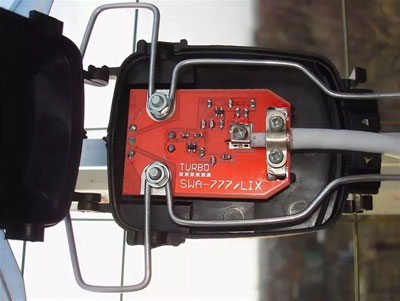
Advantages and disadvantages of antenna amplifiers
Taking care of the quality of your future leisure, it is also important to think about whether this or that unit suits you. Alas, antenna amplifiers are not suitable for everyone. Our review of the pros and cons of the device will help solve this issue:
Pros:
- signal amplification and, as a result, a high-quality “picture” on the screen;
- noise minimization;
- increasing the frequency range.
Minuses:
- possible signal overload (possible need for regulators);
- dependence on weather conditions (for example, lightning can damage the amplifier);
- probability of self-excitation.
Overview of popular models
There are many models of antenna amplifiers on the market: some are popular due to the price, others are taken by the ease of installation. Here are some popular models:
- Delta.
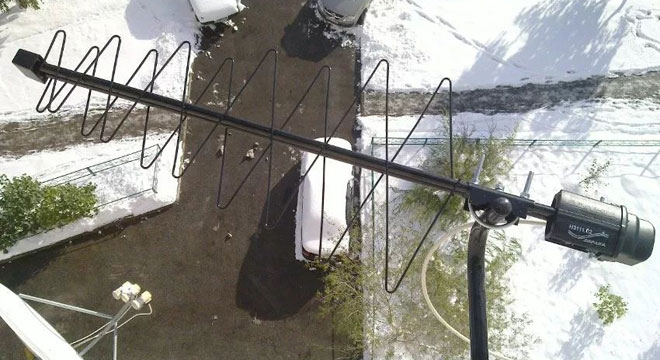
One of the most popular Russian manufacturers of amplifiers, which also deals with active antennas. Most often they buy models Delta 3311 A (durable outdoor version), Delta K 331 A (suitable for broadcasting regional TV), Delta K 331 A.03 (indoor unit with telescopic antennae).
- SWA.
This type of amplifier is suitable for Polish (grid) type antennas.
Its range varies from 49 MHz to 790 MHz. We advise you to purchase equipment with a narrower range to avoid unnecessary noise.
ATTENTION: There are a lot of SWA models, so when choosing, pay attention to the characteristics that suit you.
- Locus
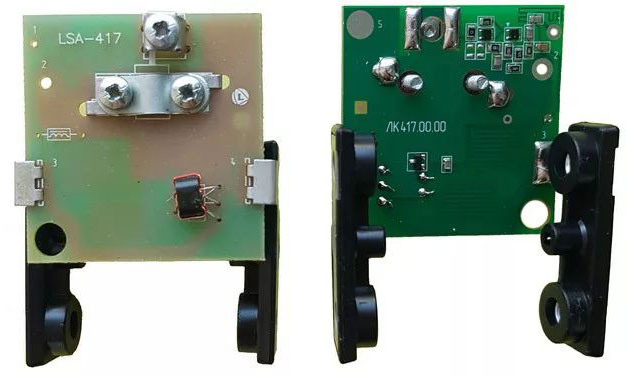
An LSA amplifier is suitable for this antenna manufacturer. He is able to resume its activity and increase signal efficiency.
- Alkad
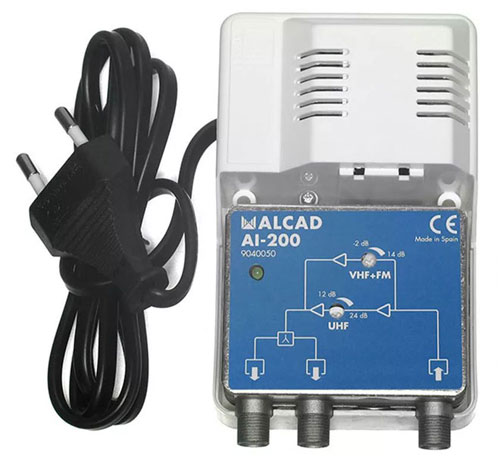
This model has two to four outputs to which you can connect multiple TVs.You can also adjust the gain here.
- Terra
A Lithuanian manufacturer whose amplifiers can add the signals of several antennas, that is, they have more than one input.
Summing up, we recall that when choosing an antenna amplifier, one should be guided by many factors, but it is quite possible to cope with the task without the help of a professional. Also, of course, you can make such a device with your own hands, but if you are not confident in yourself, then it is better to go to a specialized store, because any foreign mechanisms in themselves are sources of noise and interference - it is better to minimize them.
Similar articles:
